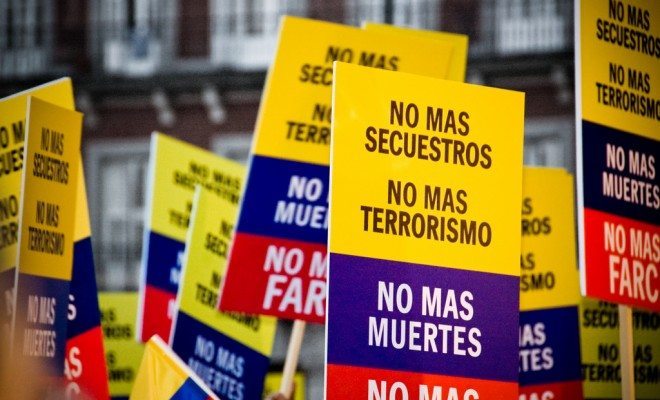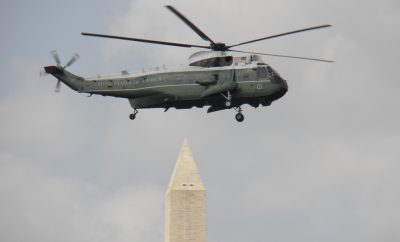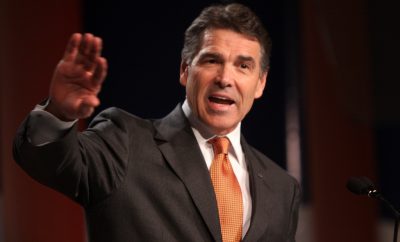 Image courtesy of [Camilo Rueda López via Flickr]
Image courtesy of [Camilo Rueda López via Flickr]
World
FARC: Preventing Peace in Colombia?
In Colombia a violent conflict has been raging for more than 50 years. This conflict has pitted the nation’s government against a rebel–possibly terrorist–group known as FARC. With the struggle surpassing the half-century mark, both sides have been willing to return to the negotiating table to give peace yet another chance. However, the process is once again under the threat of unraveling due to a familiar cycle of FARC ambushes and government reprisals. Read on to learn about the conflict’s history, previous efforts at peace, other groups and issues in play, and whether this round of negotiations is likely to actually result in peace for the embattled nation.
History of the Conflict
The Revolutionary Armed Forces of Colombia’s (FARC) earliest origins can be traced all the way back to the late 1940s and 50s. During this time, the two major political parties in Colombia–the Liberals and the Conservatives–were locked in a brutal civil war for control of the country. The conflict left more than 300,000 people dead. Following the end of the war, the Conservatives took control of the government and barred many of their Liberal opponents from participating, in effect marginalizing them. Several groups emerged as a reaction. One of these groups was led by Manuel Marulanda, who founded the FARC’s precursor, the Marquetalia Republic, and was the first leader of FARC as well. This group began arming and organizing in the mountains.
In 1964, the government launched an attack on this organization, quickly routing them. However, Marulanda escaped along with several followers. Before fleeing he and other group leaders agreed to the Agrarian Program of the Guerillas, basically FARC’s constitution, which created roles within the group and a common strategy. This was followed up every two or four years by congresses where the group’s members would meet to discuss new policies.
A seminal moment was reached at one such conference in 1982, when members became determined to solidify their control in the mountainous regions and also begin to expand their influence into cities with the ultimate goal of taking the capital. In the ensuing years, particularly from the 1990s to the early 2000s, the group engaged in several high profile and ostentatious attacks on police, soldiers, villagers, rival groups, and even a presidential inauguration.
Ideology and Perception
FARC was founded on a Marxist-Leninist ideology. The group claims to represent the lower class of the country, namely the poor and farmers, who it feels are being oppressed by the government. It also opposes the opening up of the country to foreign interests, particularly American corporations, which it views as imperialistic.
However, while FARC espouses a high-minded ideology, its actions are less than noble. In fact the group has been designated a terrorist organization by a number of countries including the U.S. This is due in part to the group’s tactics, ranging the whole violent gambit from murder to bombings. With its base in Colombia, as well as its presence in Ecuador, Panama, Brazil, Venezuela, and Peru, the group launches attacks usually within its own territory as well as outside raids to obtain supplies. These attacks generally target military personnel and foreigners, however a large number of civilians have been caught in the cross fire.
FARC’s Power Base
While its commitment to Marxist-Leninism is dubious, so too are the ways the group generates its funding. Much of the wealth created by FARC has been through practices such as kidnapping, extortion, and cocaine trafficking. In fact, estimates for the amount of money FARC earned from the cocaine trade range from $220 million to $3.5 billion. FARC has also, recently, added the ignominious task of illegal gold mining to this grim list.
Additionally, the group has allegedly received support from like minded and sympathetic governments in Venezuela and Ecuador. According to documents the Colombian military claims it seized in a raid against FARC in Ecuador in 2008, then-Venezuelan president Hugo Chavez had given the group $300 million. While Chavez denied the allegations, these countries have been open to FARC in response to U.S. support of the Colombian government.
So Close Yet So Far Away
The current peace negotiations between FARC and the Colombian government are not the first attempts at a détente. In fact they are far from it–attempts to broker peace between the two sides have gone on almost as long as the fighting. The first efforts came in 1984 when, as part of Uribe Accords, FARC agreed to stop the kidnappings and the government pushed the group to channel its energy into legitimate political movements. Although the ceasefire ultimately did not hold and the group continued fighting, it did lead to the Patriotic Union and the Colombian Communist Party. These were the legitimate government parties associated with the FARC, similar to Hamas in Palestine or Sinn Fein in Ireland.
These talks failed however, because FARC’s political candidates, though successful, were repeatedly murdered by right-wing paramilitary groups. Additionally no demands of a ceasefire were ever made on behalf of the government.
The next major effort came in 1998, when then-President Andres Pastrana once again agreed to provide FARC with a demilitarized zone from which to operate. However, this move backfired as FARC capitalized on the temporary weakness of the government to recollect itself militarily, launch attacks, grow coca, and kidnap officials. Nevertheless, this lack of commitment on behalf of FARC may have ushered in its own decline, as it led to a backlash in which the citizenry called for a tougher stand against the rebels. This was carried out by then-incoming President Álvaro Uribe.
The latest round of peace negotiations began secretly in Cuba. When preliminary agreements were reached, another round was proposed to be conducted in Norway, with final negotiations returning to Cuba. As part of this agreement, several reforms passed aimed at compensating victims and pardoning FARC members. The discussions themselves centered on six points. These points included rural development and land policy; the political participation of FARC; ending the conflict and reinserting FARC members back into civilian life; the end to cultivation of illicit crops and drug trafficking; reparations for victims; and lastly the implementation of these agreed-upon measures once the negotiations had concluded.
So far tentative agreements have been reached on three of the issues, although nothing is finalized until the whole process has been implemented. These three points were land redistribution, the role in civil society for demobilized FARC members, and putting an end to the illicit growing of crops used for the drug trade. However, the negotiations were temporarily put on hold when FARC kidnapped three high-ranking military officers. They were eventually released and talks resumed.
The discussions have once more been put under pressure, with the attacks on soldiers as well as a raid that killed one of the FARC negotiators. The ceasefire has also been lifted by the government and airstrikes against rebel positions have begun once more. Despite this pressure though, talks have continued in Cuba.
Other Players in Colombia
Along with FARC there are several other groups at work. These groups can be divided into left wing, of which FARC is one, and right wing, which generally oppose FARC at all levels.
Leftists
While FARC may be the largest and most infamous group in Colombia, it is far from the only one. Another Leftist group in the country is the ELN or National Liberation Army. The ELN formed at the same time as FARC, however its membership was comprised chiefly of students, Catholics, and intellectuals who were more focused on replicating a Castro-style revolution. While the groups have similar beginnings and ideologies, ELN is focused more in urban areas as opposed to the rural locations FARC dominates. Despite these similarities however, the groups have clashed directly. ELN, like FARC, is also listed as a terrorist organization, according to the U.S. State Department.
Both of these groups have operated under the larger Simon Bolivar Guerilla Coordinating Group, an umbrella organization for left-wing organizations. Along with FARC and ELN, M-19 and EPL also worked under this designation. M-19, or the April 19th movement, was FARC’s attempt at an urban organization. However, this group ultimately broke away and became independent. EPL was another aggressive communist group that was eventually weakened by FARC attacks.
Leftist groups such as these both help and hurt FARC’s position. By existing and making similar demands they reveal to the government the reality of problems such as poverty, which can be more easily dismissed if they are only discussed by one group with a controversial past. On the other side, they can be harmful by splintering the potential support base for FARC and directly undermining the group when they engage in internal conflicts that can create more violence.
Right-Wing Paramilitaries
While leftist groups formed in reaction to the conservative government,right-wing groups formed in response to organizations such as FARC. These started out small in the 1960s as local self-defense groups authorized by Colombia’s Congress.
Eventually they consolidated into the AUC or United Self Defense Forces of Colombia. This was essentially a holding company paramilitary group, created and funded by rich farmers and narcotics traffickers to protect these people and their interests from FARC and like-minded organizations. This group was very strong and its membership ranged from 8,000 to 20,000 members. Additionally, while there was never any admitted connections between these groups and the government, it has been widely speculated that the administration often looked the other way or even funded the operations. Although the group was disbanded in 2006 and its leaders pardoned, many of its former members are suspected of continuing to operate in the drug trade and other criminal operations. This group was also considered a terrorist organization by the U.S. government until 2014.
These right-wing para-military groups have a dual effect on FARC. On one side they show the violence perpetrated against the group, often at the behest of the government or powerful individuals, which can further justify FARC’s cause. Conversely they are actively trying to destroy FARC and have seen a certain degree of success. In either case, they have ratcheted up the violence and created a culture of fear and mistrust. They also make FARC less likely to come to the peace table because they are seen as the secret hand of the government.
Economics and Legacy
Decline of FARC
While securing peace with FARC is still an important goal, its importance has diminished over time. This is partly due to economics, as in 2012 a free trade agreement between Colombia and the U.S. went into effect, making the allies that much closer. Additionally, the economy of Colombia has continued to grow despite the fighting, averaging nearly 6 percent growth a year. In individual terms this has meant the average income per person has gone from $5800 dollars in 2000 to $10,000 in 2011.
The effect of this is two fold. For a government weary of fighting and eager to shine on the global stage, defeating or at least containing FARC would allow it to focus more on improving its economy and the well being of its citizens. Additionally, an improved standard of living would also seem to undermine the very existence of FARC as the group was originally supposedly founded on the idea of protecting and standing up for underrepresented groups, namely the peasants.
FARC also appears to be declining. In 2001, the group was believed to have as many as 16,000 members; that number has recently dwindled to as few as 6,000 to 8,000. This has been the result of an intensified campaign by former President Uribe, whose father was murdered by FARC in a kidnapping attempt. Aside from decreased membership, the leadership of FARC has also been hit hard. After its founder died of a heart attack in 2008, his second in command was subsequently killed in the raid in Ecuador. Other leaders have also been killed. Desertion has become a problem as well as some fighters, who were attracted by noble ideas, have become jaded by the drug trafficking and perpetual violence.
Legacy
So what legacy does FARC leave behind? In terms of numbers, over 220,000 people have been killed as a result of fighting between the group and the government since its inception. Additionally, much of the popular support once enjoyed by FARC has eroded, as people have become exhausted with the conflict and simply want a better life. Most of the territory once held by FARC has also been lost as a result of the increased military efforts on behalf of the government. Thus, FARC’s strength and importance has been greatly reduced. Still, an agreement between the group and the government would be a major step in rebuilding the war-torn nation.
Conclusion
The most recent round of talks between Colombia and FARC offer a glimmer of hope. But this hope can only be achieved if both sides stop committing the same perpetual violent acts that have spawned this conflict in the first place. Nevertheless, if the last few month’s actions are any indication, this is not going to happen.
This presents a challenge to both sides. On one side, FARC is a diminished organization that faces enemies on all sides and has few friends. The government, meanwhile, clearly wants to capitalize on economic growth and turn the page on the history of drug violence and terrorist insurgencies. Both of these goals can be accomplished, but the two sides have to come to terms and end a destructive conflict that has lasted for more than 50 years.
Resources
Primary
Congressional Research Service: Peace Talks in Colombia
Additional
Stanford University: Revolutionary Armed Forces of Colombia-People’s Army
Council on Foreign Relations: FARC, ELN: Colombia’s Left Wing Guerillas
BBC News: Colombian FARC Negotiator Killed in Bombing Raid
Institute of the Americas: Colombia Pushes Back Cartels, Terrorists to Become Economic Powerhouse








Comments